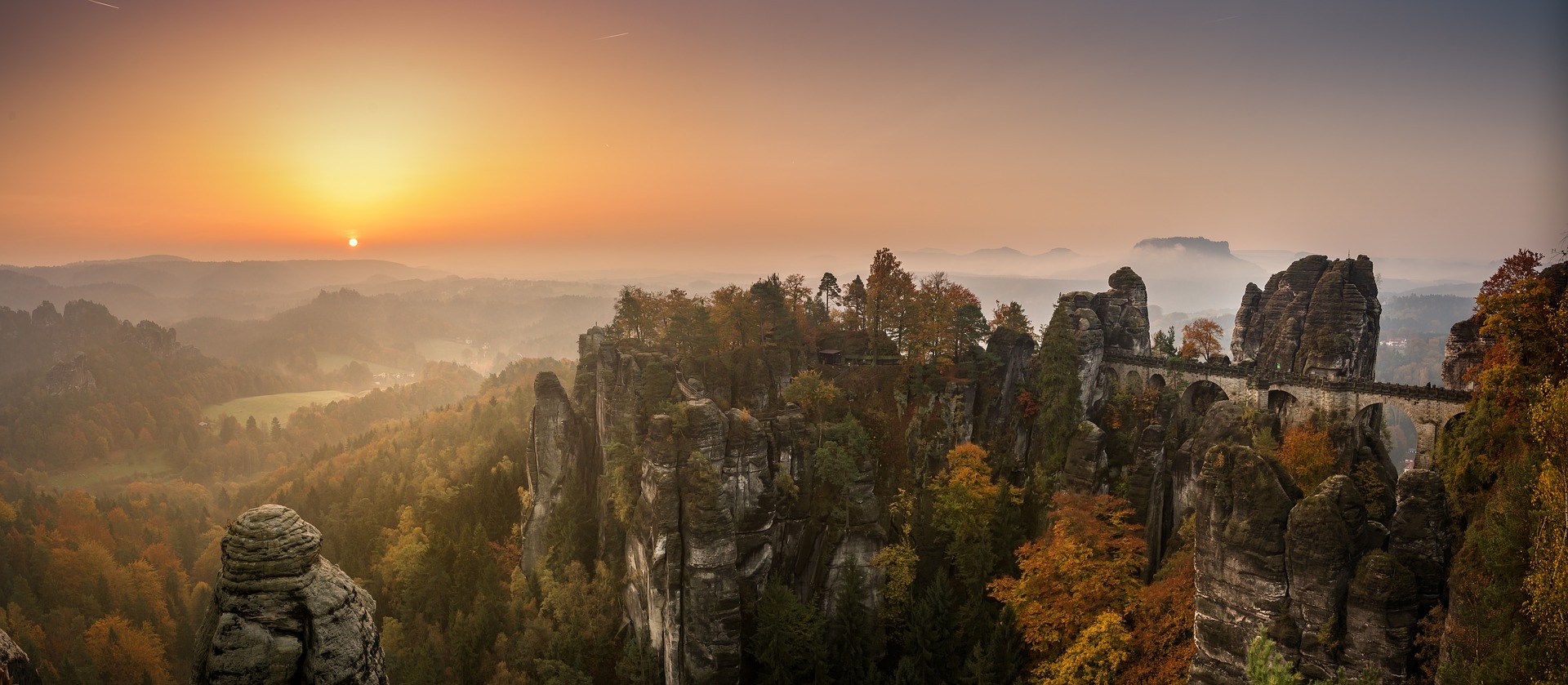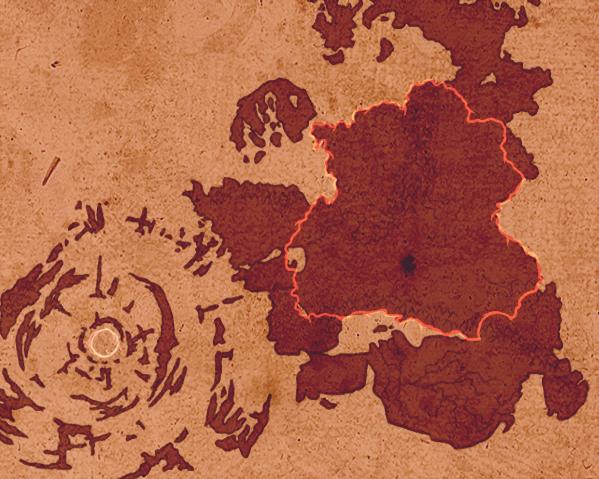"The Kingdom of ka-Khasta had a rich history even ignoring the story of its unification, full of oddments and marvels."
-The Heretic's Guide to Homecoming, Book One: Theory
Forests and Fortresses
Home to two of the Nine Wonders of the Ancient World, the grandest library in the Bereni system, and a line of infamous and intriguing royalty, the Kingdom of ka-Khasta is a land of living legend. The largest of all of North Berena’s regions, ka-Khasta is broken up into nine dominions that rule over fifty-seven provinces, all of whom pledge themselves to the Yükbasar royal family in the walled city of Babagaz.
Geographically, dense boreal forest covers nearly 60% of the land, which is rifted with stunning mountain ranges that are rich with various metals. Many ka-Khastans will joke that their kingdom built the rest of the continent, seeing as their bounty of lumber and ore is exported to nearly all the rest of the continent. Indeed, ka-Khasta’s might gives it a strong hand in the shaping of many surrounding governments. With its striking landscape and intriguing political history, this kingdom is the powerhouse of North Berena.
A Proud Line of Rulers
Following the official conclusion of the shalledrim hunts in 4308AS, the humans of the region spent the next century trying to determine the future of the land’s governance. Early attempts at negotiation failed and led to feuding between the small kingdoms that had established themselves during the height of the hunts. In 4455AS, the conflict escalated into what is now called the Twelve Years’ War, wherein the nine most established kingdoms engaged in hostile action toward their neighbors. The war came to an end in 4467AS, when the Yükbasar army forced five of the enemy kingdoms into submission, prompting the other three to officially surrender in favor of ending the war through diplomacy rather than imitating their shalledrim predecessors.
The Yükbasar family quickly established themselves as the True Royalty in ka-Khasta’s walled capital of Babagaz, under the rule of Queen Hamazagh. In her wisdom, the queen sent eight of the cleverest and most marriageable members of her family to the former kingdoms, now referred to as the Nine Dominions. This action bestowed the gift of True Royal blood to the Dominions, establishing the legitimacy of their rule over their provinces, and a sense of connection throughout all of ka-Khasta. Today, the structure of the government remains much the same, with the nobles of the Dominions ruling over their provinces while ultimately answering to the current ruler back in Babagaz. While the rise of incapable heirs has threatened the peace several times throughout the centuries, the strength of the current monarch, King Balal, bodes well for ka-Khasta.
However, the king still has yet to fully quash the latest cycle of rumors about shalledrim infiltration in the monarchy. This is due largely to the behavior of his heir, Prince Çimek, who is known to be ostentatious at best and dreadfully petty at worst. Both his legendary beauty and his seeming disregard for the concerns of his labourers call to mind the monstrous rulers of the past, and breed suspicion that the Yükbasar line might just have a bit of the old masters’ blood within them.
When directly confronted about this by a disgruntled farmer, Prince Çimek responded, “By the Beloved’s blessed cheek–what would make you people happy? Must I don a crown of shit to be considered relatable?” The farmer was then promptly executed.
Worshipping Human Capability
The Prophet Evin is said to have created the first major human settlement following the Shattering, and launched the first pushback of human slaves against the shalledrim warlords who took over the continent after the fall of the Empire. The collection of works derived from his life and teachings, today called the Book of Evin, centers primarily around the concepts of responsibility to fellow humankind and respect for non-human life. Where many religions focus on the teachings and expectations of gods, Evnism is unique in that it celebrates the power of the individual human to enact their own form of divine intervention through personal willpower.
The religion was developed around 400AS, following the Prophet’s death. It began in southern ka-Khasta, around where Evin’s settlement was established, but is now primarily practiced in the northern Dominions, which have not been influenced as heavily by the diversity of belief coming from the neighboring Pilgrim State. Though the royalty at Babagaz are quick to reference Evnism, one would be hard pressed to find many of his true humanist teachings in their modern practices. More visible is the influence of his eldest daughter, whose fierce acts of retaliation against the shalledrim warlords turned her into a spiritual figure for many hunters in the years to come.
- The Powerful Land
-
Forests and Fortresses
Home to two of the Nine Wonders of the Ancient World, the grandest library in the Bereni system, and a line of infamous and intriguing royalty, the Kingdom of ka-Khasta is a land of living legend. The largest of all of North Berena’s regions, ka-Khasta is broken up into nine dominions that rule over fifty-seven provinces, all of whom pledge themselves to the Yükbasar royal family in the walled city of Babagaz.
Geographically, dense boreal forest covers nearly 60% of the land, which is rifted with stunning mountain ranges that are rich with various metals. Many ka-Khastans will joke that their kingdom built the rest of the continent, seeing as their bounty of lumber and ore is exported to nearly all the rest of the continent. Indeed, ka-Khasta’s might gives it a strong hand in the shaping of many surrounding governments. With its striking landscape and intriguing political history, this kingdom is the powerhouse of North Berena.
- The Yükbasar Royal Family
-
A Proud Line of Rulers
Following the official conclusion of the shalledrim hunts in 4308AS, the humans of the region spent the next century trying to determine the future of the land’s governance. Early attempts at negotiation failed and led to feuding between the small kingdoms that had established themselves during the height of the hunts. In 4455AS, the conflict escalated into what is now called the Twelve Years’ War, wherein the nine most established kingdoms engaged in hostile action toward their neighbors. The war came to an end in 4467AS, when the Yükbasar army forced five of the enemy kingdoms into submission, prompting the other three to officially surrender in favor of ending the war through diplomacy rather than imitating their shalledrim predecessors.
The Yükbasar family quickly established themselves as the True Royalty in ka-Khasta’s walled capital of Babagaz, under the rule of Queen Hamazagh. In her wisdom, the queen sent eight of the cleverest and most marriageable members of her family to the former kingdoms, now referred to as the Nine Dominions. This action bestowed the gift of True Royal blood to the Dominions, establishing the legitimacy of their rule over their provinces, and a sense of connection throughout all of ka-Khasta. Today, the structure of the government remains much the same, with the nobles of the Dominions ruling over their provinces while ultimately answering to the current ruler back in Babagaz. While the rise of incapable heirs has threatened the peace several times throughout the centuries, the strength of the current monarch, King Balal, bodes well for ka-Khasta.
However, the king still has yet to fully quash the latest cycle of rumors about shalledrim infiltration in the monarchy. This is due largely to the behavior of his heir, Prince Çimek, who is known to be ostentatious at best and dreadfully petty at worst. Both his legendary beauty and his seeming disregard for the concerns of his labourers call to mind the monstrous rulers of the past, and breed suspicion that the Yükbasar line might just have a bit of the old masters’ blood within them.
When directly confronted about this by a disgruntled farmer, Prince Çimek responded, “By the Beloved’s blessed cheek–what would make you people happy? Must I don a crown of shit to be considered relatable?” The farmer was then promptly executed.
- Religion: Evnism
-
Worshipping Human Capability
The Prophet Evin is said to have created the first major human settlement following the Shattering, and launched the first pushback of human slaves against the shalledrim warlords who took over the continent after the fall of the Empire. The collection of works derived from his life and teachings, today called the Book of Evin, centers primarily around the concepts of responsibility to fellow humankind and respect for non-human life. Where many religions focus on the teachings and expectations of gods, Evnism is unique in that it celebrates the power of the individual human to enact their own form of divine intervention through personal willpower.
The religion was developed around 400AS, following the Prophet’s death. It began in southern ka-Khasta, around where Evin’s settlement was established, but is now primarily practiced in the northern Dominions, which have not been influenced as heavily by the diversity of belief coming from the neighboring Pilgrim State. Though the royalty at Babagaz are quick to reference Evnism, one would be hard pressed to find many of his true humanist teachings in their modern practices. More visible is the influence of his eldest daughter, whose fierce acts of retaliation against the shalledrim warlords turned her into a spiritual figure for many hunters in the years to come.
A Grim Landmark
All across ka-Khasta, the remains of this structure stand as a colossal and unsettling reminder of the might of the fallen Empire. Standing at a mountainous height, the Trans-Bereni Highway was used in its prime to transport cargo (including human slaves) all across the continent. Much research on it has been documented and is available for viewing in the library.
Today, it stands mostly in pieces, having been weathered down by nature and desecrated by furious humans of the ages past. In certain places, the Highway is unstable enough to present an architectural hazard; recently a human settlement in the west, established in the shelter of one of the Highway’s gigantic buttresses, was crushed by falling stone.
A Beloved Necropolis
The walled city of Babagaz might as well be a hamlet compared to the legendary City of the Dead. One of the Nine Wonders of the Ancient World, this necropolis houses rich and poor alike, and contains everything from small, individual graves to mausoleums the size of castles. The oldest documented tombs are just over 3100 years old, and entire family lines can be traced back through the many sectors of the City.
The ka-Khastans believe that all of the world’s dead end up in the City eventually, and if you aren’t buried within its walls, you will have to find your way through a grim and complex underworld, besting monsters and their riddles to make it to the City and find peace. Because of this, body transport is considered an established career path. Should your family be unable to send your body to the City, there are various rituals practiced to ease your passage through the underworld.
A Testament to Human Resilience
One of the greatest examples of ka-Khastan grandeur is visible in the Library of Aç Sulsum, which was magnificently restored in 4508AS after Princess Gamzhey’s inspiring visit to the Library of Ol-Penh. The only thing more impressive than its architecture would have to be its history; first constructed sometime around 1500AS, the library was twice destroyed by shalledrim and rebuilt by the resilient and dedicated librarians. Today, it is the largest of the three Bereni libraries, and holds the most extensive collection on the shalledrim and their hunters.
Since 4190AS, the library has acquired and studied three separate shalledrim corpses, which contributed greatly to what little modern understanding we have of shalledrim anatomy. The first, nicknamed ‘Yael,’ was gifted in 4190AS to the library from hunters in Khebeg, a contribution that revolutionized the way scientists approached shalledrology. The second, ‘Gehelenine,’ was named after the legendary shalledra who rent apart the Prophet Evin’s son, in the same region of south-central ka-Khasta the body was taken from in 4251AS. But the body of ‘Melailah’ is the true prize of the library, if only for the fact that there is still a large swath of its skin on display for researchers, carefully preserved since 4232AS.
Melailah’s skin, and the documented discoveries from the other two shalledrim, are accompanied by many human artifacts from the period of the hunts. There are centuries’ worth of hunters’ logs, translated into over a dozen different languages. There is also an entire section dedicated to the hunters’ tools, demonstrating the trial and error that occured in the great attempts to identify shalledrim weaknesses. These tools are not just ka-Khastan, but from all over Berena–for while the ka-Khastans have a great deal of national pride for their hunter heritage, they honor all those in Berena who were bold enough to fight against the terrible tyrants of history. For those new to shalledrology, one suggested bit of reading would be the biographies of the Chainbreakers, the largest human army that ever came together to hunt the shalledrim. Their story has inspired a number of exciting adaptations, for both the page and the stage!
Another notable section of the library would be the theology wing, particularly its Evnist collections. Evnism is one of the oldest human religions practiced in ka-Khasta, and its influence can still be found in many places across the kingdom. The library contains a series of texts from his disciples, and a few early artifacts that the Prophet himself may have touched, including a bone hair comb. Even more exciting, the current head librarian is said to be directly descended from the Prophet Evin– and given that scholars claim he had anywhere from twelve to seventeen children, it’s not all that unlikely.
Fans of ka-Khastan literature may also enjoy the section of the library that contains the first folios of Maril Bi-Jelsihad, including the much-beloved satirical novel The Prophesier. But don’t expect to just wander into the library and gain access to whatever you’d like. According to rumor, the only way to reach parts of the poetry collections is to recite a verse that can move a librarian to tears.
- The Trans-Bereni Highway
-
A Grim Landmark
All across ka-Khasta, the remains of this structure stand as a colossal and unsettling reminder of the might of the fallen Empire. Standing at a mountainous height, the Trans-Bereni Highway was used in its prime to transport cargo (including human slaves) all across the continent. Much research on it has been documented and is available for viewing in the library.
Today, it stands mostly in pieces, having been weathered down by nature and desecrated by furious humans of the ages past. In certain places, the Highway is unstable enough to present an architectural hazard; recently a human settlement in the west, established in the shelter of one of the Highway’s gigantic buttresses, was crushed by falling stone.
- The City of the Dead
-
A Beloved Necropolis
The walled city of Babagaz might as well be a hamlet compared to the legendary City of the Dead. One of the Nine Wonders of the Ancient World, this necropolis houses rich and poor alike, and contains everything from small, individual graves to mausoleums the size of castles. The oldest documented tombs are just over 3100 years old, and entire family lines can be traced back through the many sectors of the City.
The ka-Khastans believe that all of the world’s dead end up in the City eventually, and if you aren’t buried within its walls, you will have to find your way through a grim and complex underworld, besting monsters and their riddles to make it to the City and find peace. Because of this, body transport is considered an established career path. Should your family be unable to send your body to the City, there are various rituals practiced to ease your passage through the underworld.
- The Library of Aç Sulsum
-
A Testament to Human Resilience
One of the greatest examples of ka-Khastan grandeur is visible in the Library of Aç Sulsum, which was magnificently restored in 4508AS after Princess Gamzhey’s inspiring visit to the Library of Ol-Penh. The only thing more impressive than its architecture would have to be its history; first constructed sometime around 1500AS, the library was twice destroyed by shalledrim and rebuilt by the resilient and dedicated librarians. Today, it is the largest of the three Bereni libraries, and holds the most extensive collection on the shalledrim and their hunters.
Since 4190AS, the library has acquired and studied three separate shalledrim corpses, which contributed greatly to what little modern understanding we have of shalledrim anatomy. The first, nicknamed ‘Yael,’ was gifted in 4190AS to the library from hunters in Khebeg, a contribution that revolutionized the way scientists approached shalledrology. The second, ‘Gehelenine,’ was named after the legendary shalledra who rent apart the Prophet Evin’s son, in the same region of south-central ka-Khasta the body was taken from in 4251AS. But the body of ‘Melailah’ is the true prize of the library, if only for the fact that there is still a large swath of its skin on display for researchers, carefully preserved since 4232AS.
Melailah’s skin, and the documented discoveries from the other two shalledrim, are accompanied by many human artifacts from the period of the hunts. There are centuries’ worth of hunters’ logs, translated into over a dozen different languages. There is also an entire section dedicated to the hunters’ tools, demonstrating the trial and error that occured in the great attempts to identify shalledrim weaknesses. These tools are not just ka-Khastan, but from all over Berena–for while the ka-Khastans have a great deal of national pride for their hunter heritage, they honor all those in Berena who were bold enough to fight against the terrible tyrants of history. For those new to shalledrology, one suggested bit of reading would be the biographies of the Chainbreakers, the largest human army that ever came together to hunt the shalledrim. Their story has inspired a number of exciting adaptations, for both the page and the stage!
Another notable section of the library would be the theology wing, particularly its Evnist collections. Evnism is one of the oldest human religions practiced in ka-Khasta, and its influence can still be found in many places across the kingdom. The library contains a series of texts from his disciples, and a few early artifacts that the Prophet himself may have touched, including a bone hair comb. Even more exciting, the current head librarian is said to be directly descended from the Prophet Evin– and given that scholars claim he had anywhere from twelve to seventeen children, it’s not all that unlikely.
Fans of ka-Khastan literature may also enjoy the section of the library that contains the first folios of Maril Bi-Jelsihad, including the much-beloved satirical novel The Prophesier. But don’t expect to just wander into the library and gain access to whatever you’d like. According to rumor, the only way to reach parts of the poetry collections is to recite a verse that can move a librarian to tears.





